Diagnostický případ
Turbocharger with low power or DPF adaptation?
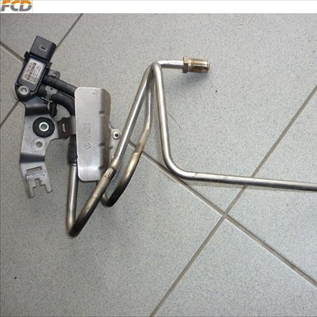
Informace o vozidle
| VIN: | |
| Výrobce: | Skoda |
| Model: | Octavia II |
| Rok výroby: | 2008 |
| Kód motoru: | 2.0 16V TDi DPF |
| Typ motoru: | BMN |
| Výkon (kW): | 125 kW |
| Převodovka: | Manuální |
| Palivo: | Diesel |
| Najeto: | 0 km |
- paměť závad nečtena
- jedno z jakého důvodu
- během jízdy
- [0] no faults in memory
- trvalá závada
- sporadická závada
Doposud provedeno bez úspěchu
Turbocharger replacement - only half the solution, but now without any DTCs in memory(low supply pressure - this fault occured just once before the turbocharger was replaced).Závěr
VOZIDLO JSEM NEOPRAVOVAL20.5.2010 20:25:37 – The differential pressure sensor of the DPF filter was replaced together with the tube system. My explanation is that the fuel map for engine power is adapted for a low rpm range. In my view this occurred due to the fact that two DTCs gradually merged together, because the differential pressure sensor started to age and one of the metering tubes was leaking. Due to these faults the ECU is receiving conflicting information. Unfortunately this reaserch had to be finished, because the car was returned to leasing company.
Obrázky, fotografie a soubory
Two faults at the same time distorting the differential pressure values (4084/2)
The defective differential pressure sensor shows 0,747V instead of 0,5V when ignition was on.The tube leading to the differential pressure sensor was damaged at the end and thus was causing a leak.
The combination of those two problems caused that the differential pressure sensor range moved up, generating information that the DPF filter has a higher value of saturation. The leaking tube from the filter at higher RPM showed lower pressure behind the filter, so this would also increase the differential pressure value. Based on these findings there is a question how the system adapts the engine power in case the differential pressure sensor range is permanently shifted.
Test drive - full throttle 3rd. gear from 1500 rpm - Octavia RS (4084/3)
Data recording from log of SuperVAG ( or VCDS ), block of measured values 11 ( revs = black dashed line, boost pressure - requested value = green, boost pressure - actual value = red, boost pressure control = thick orange)As we can see from the recording the control unit is trying to increase the boost pressure value with a 85% duty cycle. Without reaching the required boost pressure the boost pressure control duty cycle drops to 62% and then to 55%. Why the duty cycle does remain at the high value, when the requested boost pressure wasn't achieved is not clear.
Test ride - full throttle 3rd. gear from 1500 n/min - Octavia Scout (4084/4)
Data recording from the log of SuperVAG ( or VCDS ), block of measured values – 11 ( engine rpm = black dashed line, boost pressure - requested value = green, boost pressure - actual value = red, boost pressure control = thick orange)On a relatively newer car, with lower engine power and with a DPF filter (no vehicle problem since new) the boost control works as it should. When the turbocharger vanes are adjusted with 80% duty cycle the boost pressure immediately rises to the required value. From here it is controlled exactly as required and follows the reguested value trace all the way to 4200 rpm.
See also that the green line (requested pressure) looks in the low rpm range differently. Goes immediately to max. pressure from low rpm. The waveforms from the defective RS is different to the Scout.
Test ride - full throttle 3rd. gear from 1500 n/min - Octavia RS after replacement of turbocharger. (4084/5)
Block of measured readings nb.3, revs 1500 - 4000 ( revs = black dashed, amount of air expected = green, actual amount of air = red, driving of EGR valve = thick orange )No inclination found between amount of expected and actual air. Proof that MAF is OK and exhaust is not congested.
Test ride - full throttle 3rd. gear from 1500 n/min - Octavia RS after replacement of turbocharger. (4084/6)
Block of measured readings nb 8, full throttle, 3rd gear, revs 1500 - 4000( Revs = black dashed, drivers will = green, torque restriction = red, smokines restriction = blue )
Reading after repair - replacement of Sensor of diferential pressure over DPF, extraction tubes system and turbocharger )
From the graph is visible, that on power restriction has influence namely the smokines restriction. Why is this line so low, when PDF has just 20% inflation, EGR is closed and MAF shows what it should... There must be another factor, which reduces amount of fuel in low rews, because compared with Scout, this RS is lazy.
Test ride - full throttle 3rd. gear from 1500 n/min - Octavia RS after replacement of turbocharger. (4084/7)
Reading from SuperVAG ( or VCDS ) - block of measured readings 11 ( Revs = black dashed, filling pressure requested level = green, actual filling pressure = red, driving of filling pressure = thick orange)As is visible, the ECU tryes to rise the filling pressure by duty cycle to 85% without reaching requested level - nearly the same way as before replacement of charger.
Question remain, if ECU has not changed maps for fuel filling due to long lasting influence of faults.
Unfortunately the car has to be handed back, so there is no time to investigate.




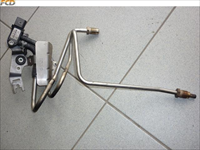
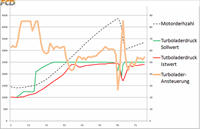
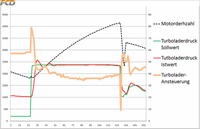
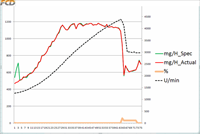

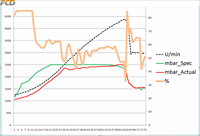

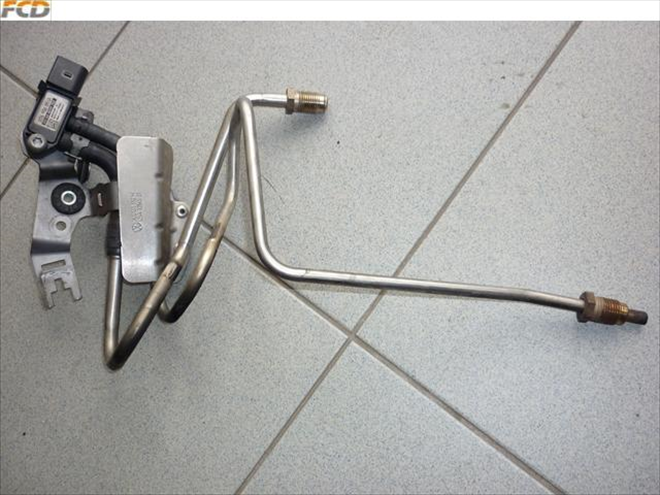
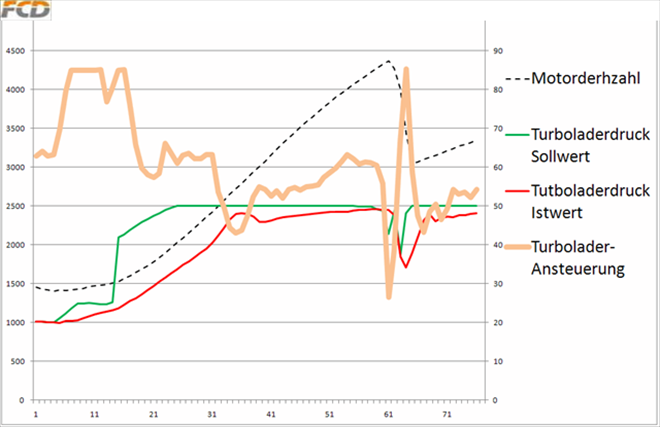

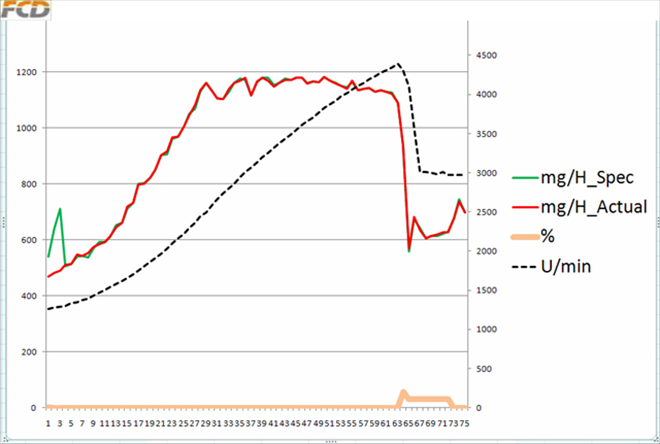

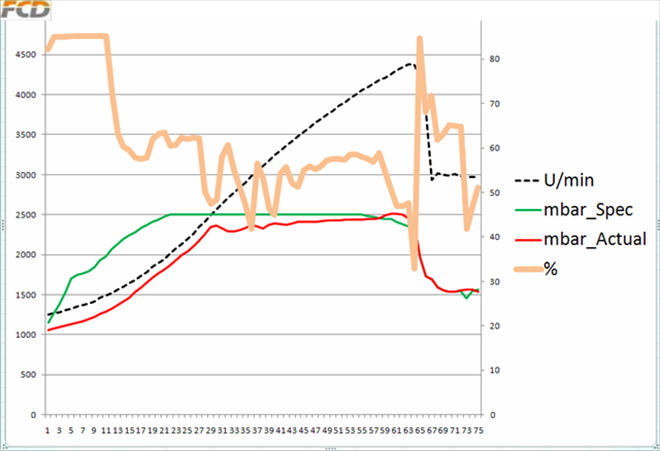
Komentáře (0)